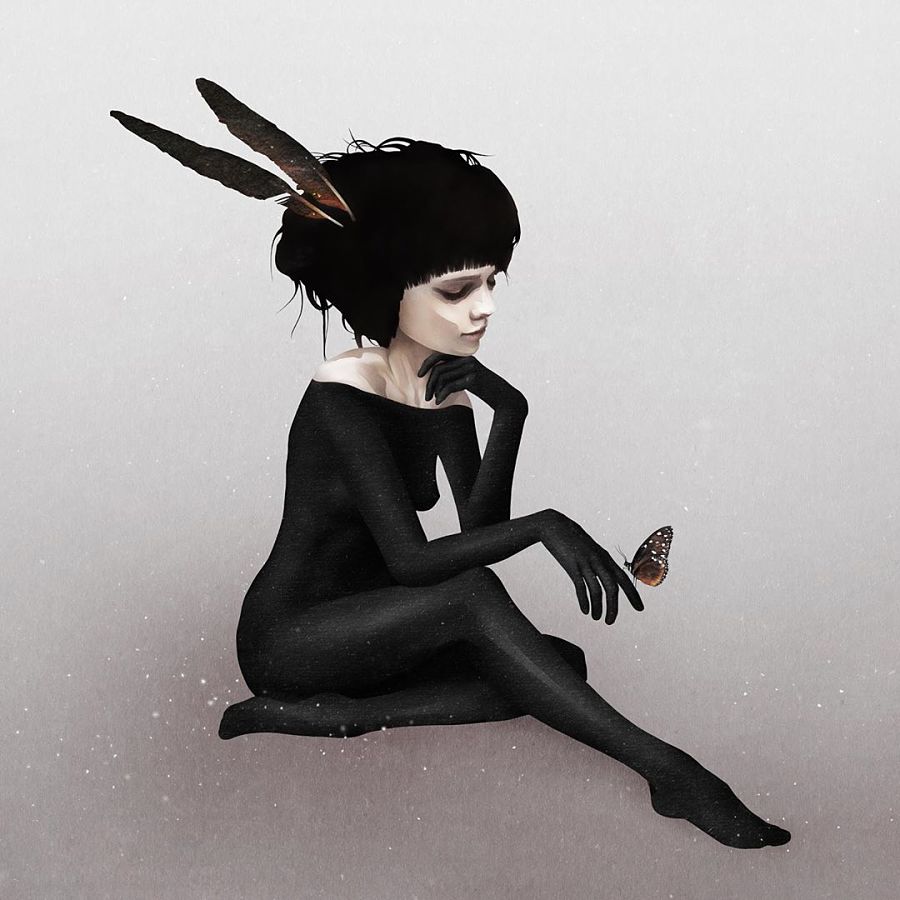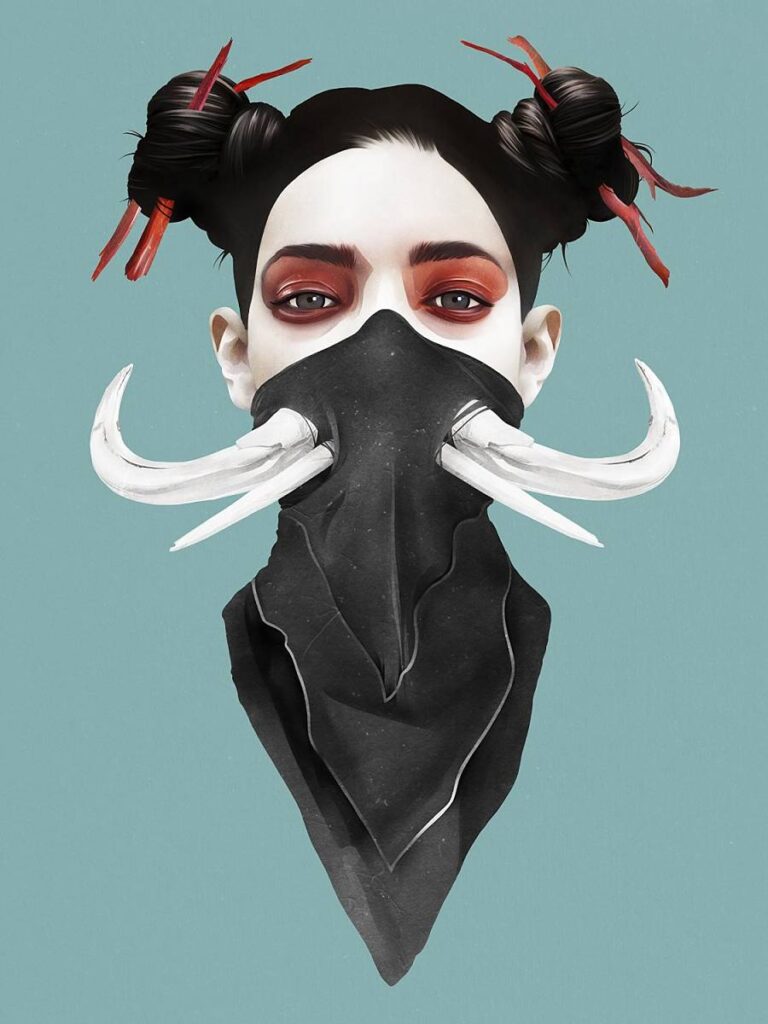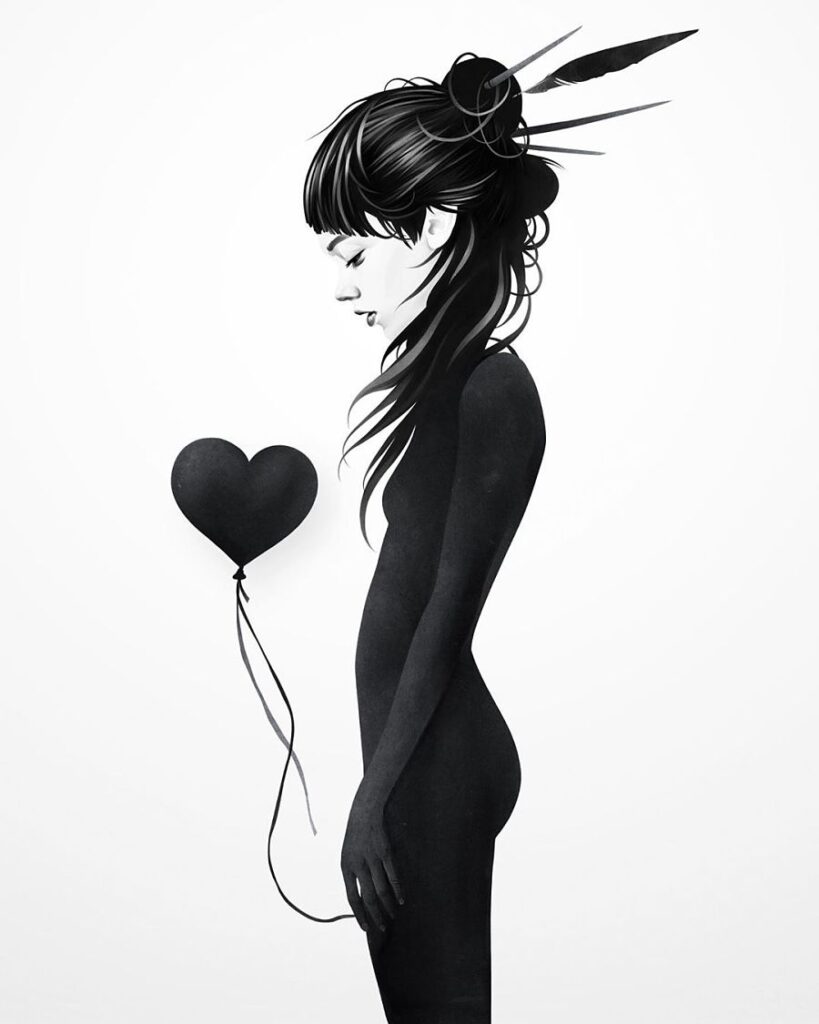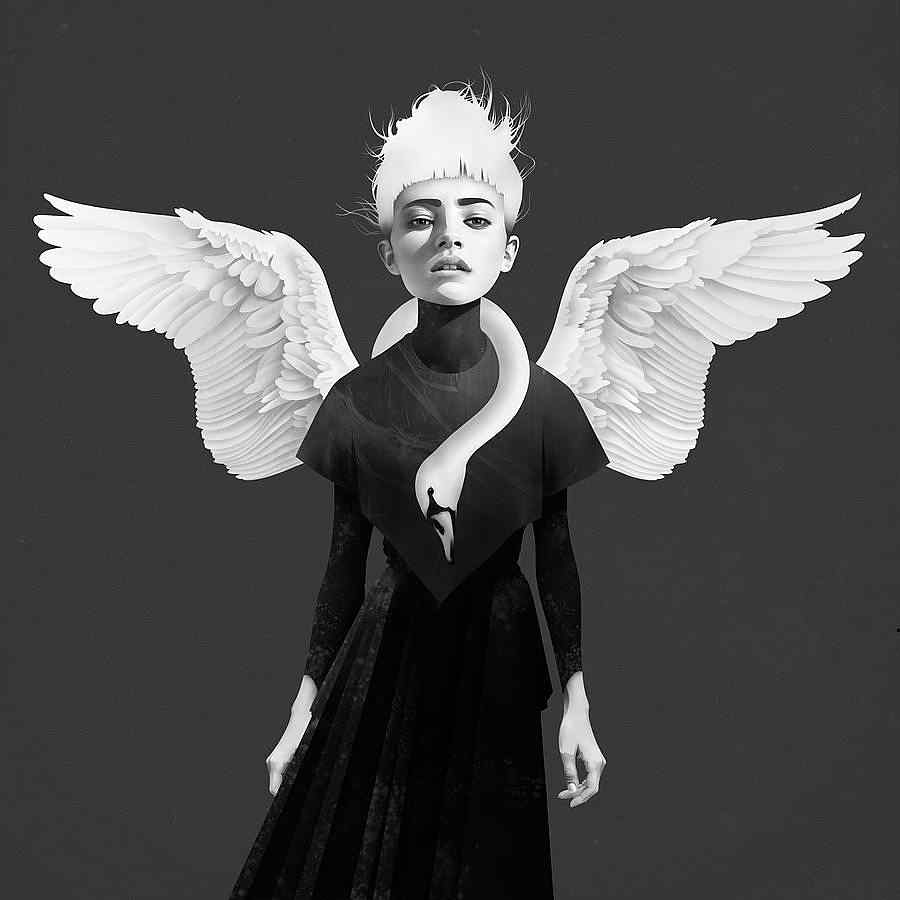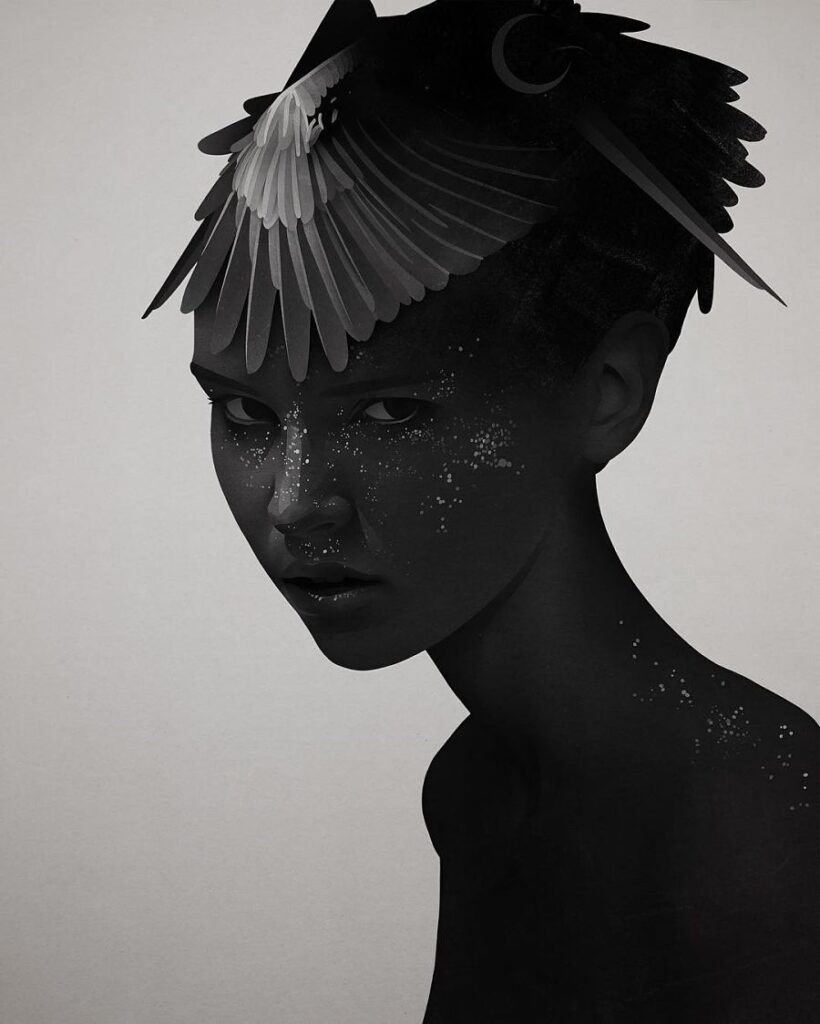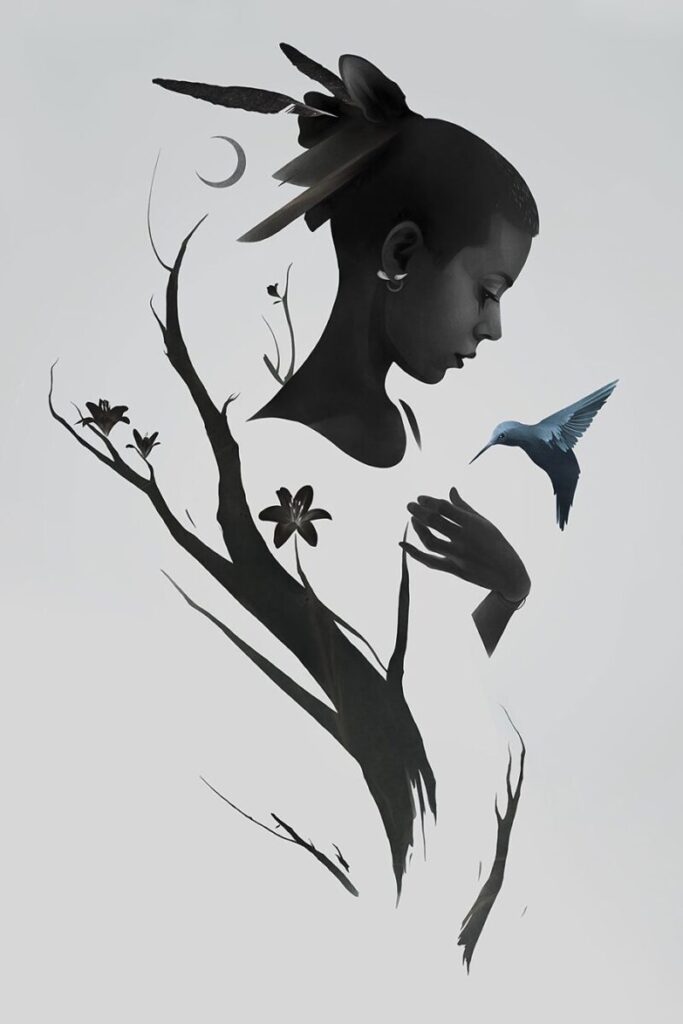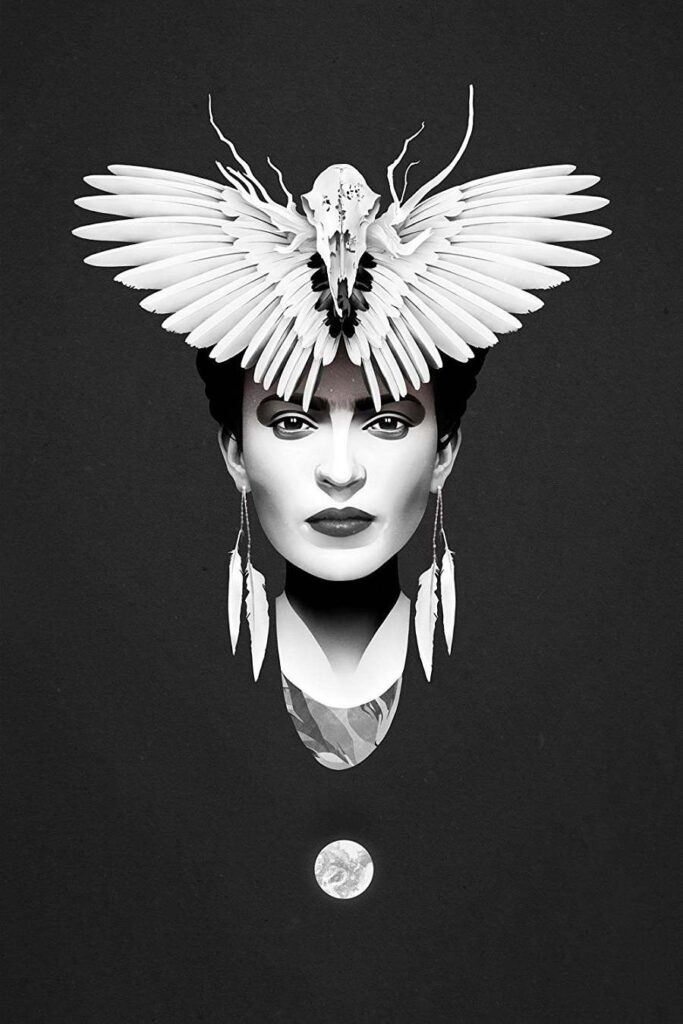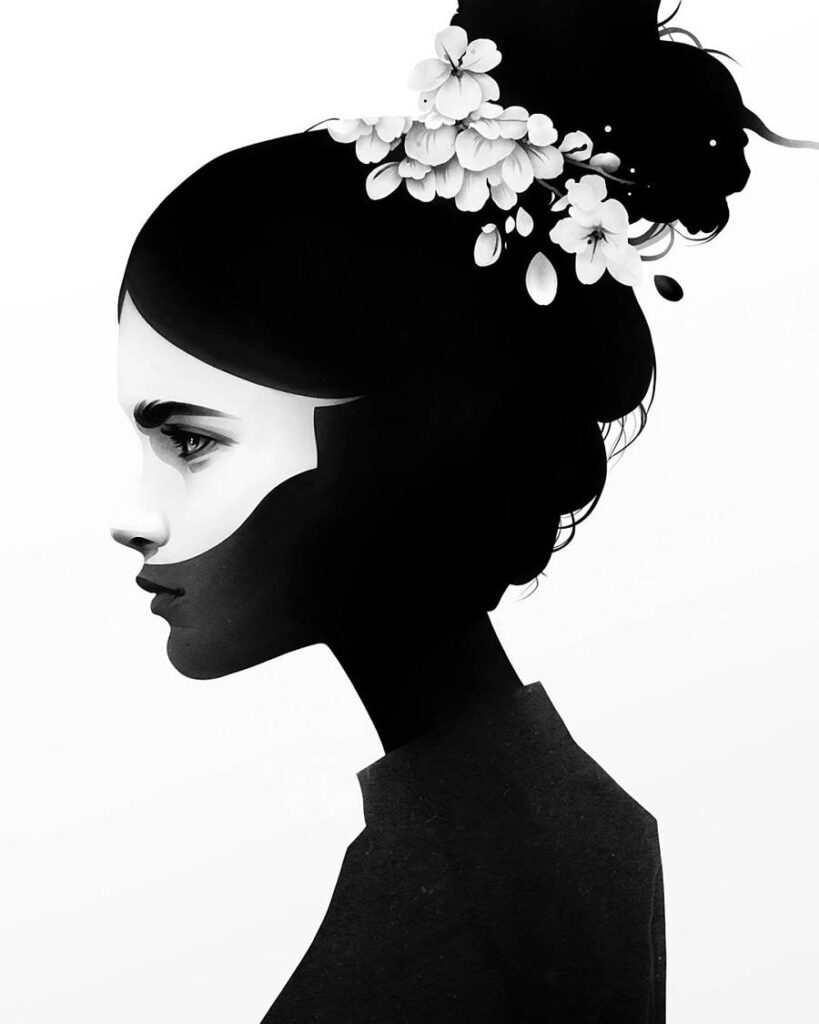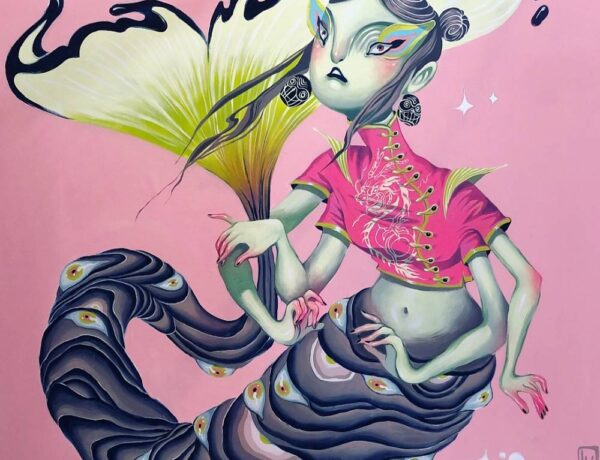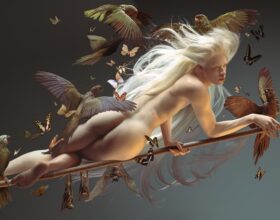Ruben Ireland is nearing a household name as he has been producing one-of-a-kind artwork to a ravenous customer base for nearly a decade. With a strong online presence, his admirers can not only buy prints to decorate their walls with, but also a vast assortment of textile products including pillows and blankets, phone cases, and even welcome mats to show their enthusiasm! His minimalist style easily graces both sprawling modern homes and well-established art galleries around the world.
The women of Ruben Ireland’s work are captivating as they stare outwards towards the abyss in quiet contemplation, feeding a wild nature. Some wear visages of animals while others hide their faces in the beautiful contrast of light and shadow. Splashes of color streak through some of his pieces, highlighting but never dominating the perfect balance between opposing forces.
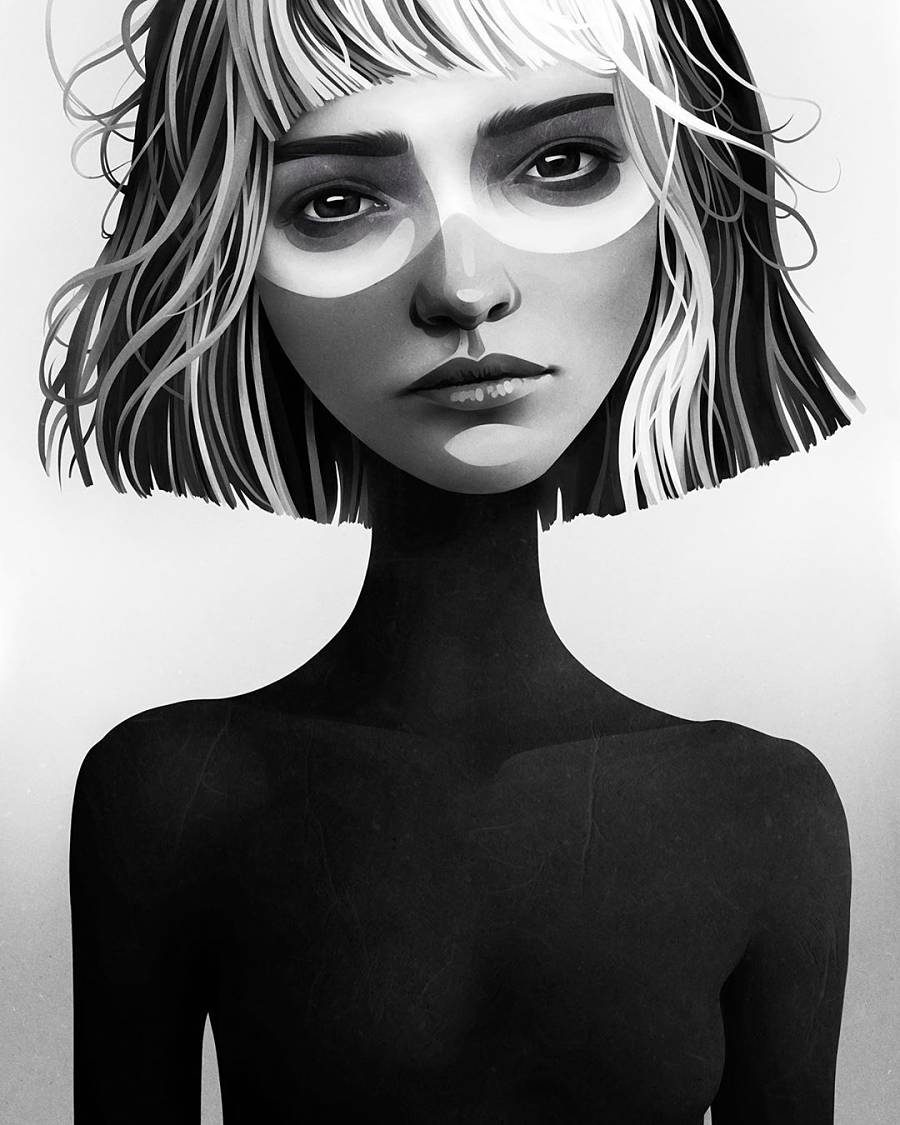
I approach the women in my work from a symbolic perspective, stripping away as much as possible and trying not to include much sense of place or time, omitting artefacts unique to our current time period in terms of style or fashion.
Tell me about your creative process. Do you have any superstitions when starting a new piece? Any moods you need to be in?
It’s very important that I clear my mind when starting a new work. This applies even more during the process, which is a little counter-intuitive since my instinct suggests I should put all my being, including my mind to work. The mind can listen as much as it can talk and it seems creativity lives somewhere within that balance. I’ve gotten into periods of forgetting that and instead, spent a lot of time deeply scrutinizing the work, without taking time to reflect emotionally, which tends to make for artworks that don’t quite hit the mark and lack soul. The trouble is, it’s hard to identify this balance technically and visually; it can only be felt. It’s a self-perpetuating issue then, that can be very hard to see whilst I’m in it. To balance that out, I enjoy reading, watching documentaries, listening to lectures and podcasts. If I could sum that up as a mood, it would be serene curiosity or inspired serenity, something like that.
On average how long does it take you to get a piece done? Do you prefer to work on large pieces or small ones?
I’m very concerned with final print quality, making sure lines and textures translate properly at larger print sizes. This tends to mean each work can take a few weeks, or more, to make. Although I work digitally and am aware that larger brushes are available, I’ve never trusted most of the tools available in Photoshop or Corel for printed work that requires close scrutiny. So I’ve always used a 5-10 px standard paint brush and eraser tool and create my lines, edges, cuts, and details by hand whilst magnified into the canvas. It’s very laborious and time consuming but it’s become an important part of my practice, almost therapeutic and meditative. It also gives me full control throughout the process. I do, however, balance out this laborious process with other elements in my work, like using inks, watercolours, coffee, ash and water. I take an opposite approach [with these] and let randomness and quick movements guide the outcome. Mixing these elements together often comes at the end and can be the most satisfying part [of the process]. I struggle with overthinking and indecisiveness, often changing the direction of an image many times of the course of its manifestation. I take far too long, but for me it’s worth the time.
I find that limiting my colour palette to almost exclusively black and white, puts emphasis on many of the dichotomies I’m trying to look at, the relationship between chaos and order, strength and fragility, anxiety and serenity, joy and despair.
You create women typically in the nude with ever so slightly exaggerated proportions. What can you tell me about your choices here?
I approach the women in my work from a symbolic perspective, stripping away as much as possible and trying not to include much sense of place or time, omitting artefacts unique to our current time period in terms of style or fashion. The naked body can reflect our inherent vulnerability and fragility, not exactly physically but experimentally, along with shadows that talk about obscurity and revelation. Horns can signify strength and power, stars are the knowable unknown, the moon is order, beauty, and the passing of time. Using these universal markers, I’m trying to explore the inner experience, without ignoring the external parallels as well. The idea of slightly skewing proportions comes from the sensory homunculus, a visual representation of how we sense our bodies from within, with certain aspects of the figure vastly exaggerated, almost like a hierarchical diagram of our body parts according to senses. It seems natural that I could explore emotions in a similar way. Giving emphasis to the eyes and mouth, weakening the frame, strengthening the shoulders and hands, enlarging the head slightly and supporting it with a lengthened, narrow neck. I hope to convey a nuanced state that people can read via these forms and relate to on an emotional level.
As limited as your color palette is, how do you make the decision for your colors?
I find that limiting my colour palette to almost exclusively black and white, puts emphasis on many of the dichotomies I’m trying to look at, the relationship between chaos and order, strength and fragility, anxiety and serenity, joy and despair. Introducing colour is a little difficult for me as a message or emotion can be shrouded rather than refined by [adding] it. A specific colour or set of colours can sometimes be the exact catalyst I’m looking for so I’m not averse to colour, just cautious.
Tell me about your favorite piece.
My personal favourite, at the moment, though this changes all the time, would be This Time. I’m really happy with the silhouette and movement of lines in that one. It’s also a piece where I feel like I’ve really captured the emotion I set out to and whilst it’s relatively simple conceptually, there’s a nice ambiguity to the narrative. I also really like Eva, which I made years ago. I’ve often thought of repeating that aesthetic a little in future works. Interestingly, my best selling prints were ones I expected not to be popular at all when I released them. I often wonder if I should repeat elements I wasn’t necessarily as engaged in, but overall, I try not to let sales dictate too much of what I choose to make. Money serves as poor inspiration for an artist. I think it’s more important for me to keep trying to make my next favourite work, that way I can stay motivated and am more likely to just end up stumbling on something that a lot of people want to buy.


This Time 
While I’ve been releasing works very sporadically over the past few years, I’ve been on a semi-hiatus for around 4 years. It’s a long story that involves a woman and a boat and I won’t go into that, but really I’m just excited to be back to making pictures full-time again; there’s a lot I feel I can still explore in this medium.
You have done a few collaborations with other artists in the past, including commissions from well-known entities. Tell me about your experience. Is it something you look forward to?
I really enjoy collaborations with commercial clients in particular because I get to work with subjects far outside my realm. I can get lost in my comfort zone so exploring themes chosen for me and not by me, really helps to refresh my perspective. I find it really helpful too to discuss an ongoing work with an art director, writer or musician, where normally I’m working by myself with no feedback. I can then re-approach my own work with a bunch of fresh ideas. Working collaboratively with other artists has been a blessing as well. I’ve learned a lot from each experience. It’s a much more free-form workflow than with a commercial client. We tend to just pass the works back and forth, adding and adjusting in turn and without any restrictions. One collaboration in particular with Jenny Liz Rome has lead to a hugely popular print with people. We really had no plan and something just worked with it. I have a few more in the works with other artists and I’m really excited to see what comes from those.
Who are some of the other artists that inspire you?
Really, I’m a cliche and my art heroes of the past will always be Basquiat, Schiele, Kahlo and Klimt but plenty of people inspire me today. I’m a huge fan of Riika Sormunen, Taj Francis, João Ruas, Matthew Stone, Yulia Bas. I’m also currently obsessed with Antoine Cordet’s work.
Any plans to get into other mediums or even mural work?
Possibly, but I’ve no plans to give up my current medium any time soon. I develop mini obsessions with different creative fields though. I spent a fair amount of time last year learning how to make 3D models along with some game design [elements], with dreams of creating a playable experience at some point. I also still play around a little with sculpture and modelling. I had thought to include something like that in a show at some point, although nothing’s worthy of public attention yet. For now, I’m very interested in continuing the work I’ve been doing. While I’ve been releasing works very sporadically over the past few years, I’ve been on a semi-hiatus for around 4 years. It’s a long story that involves a woman and a boat and I won’t go into that, but really I’m just excited to be back to making pictures full-time again; there’s a lot I feel I can still explore in this medium.
How do you see your art fitting in or changing the art scene?
The art scene is in constant flux and so if I have one task, it’s to be in a state of flux myself. It’s an exciting, never ending visual conversation. If I can let go and enjoy the work, I hope to keep making work that people enjoy.
What message do you want your art to convey?
That your pain can be beautiful and meaningful. That your fear can lead to courage and your weakness to strength. That your loneliness is shared and your existence matters.



